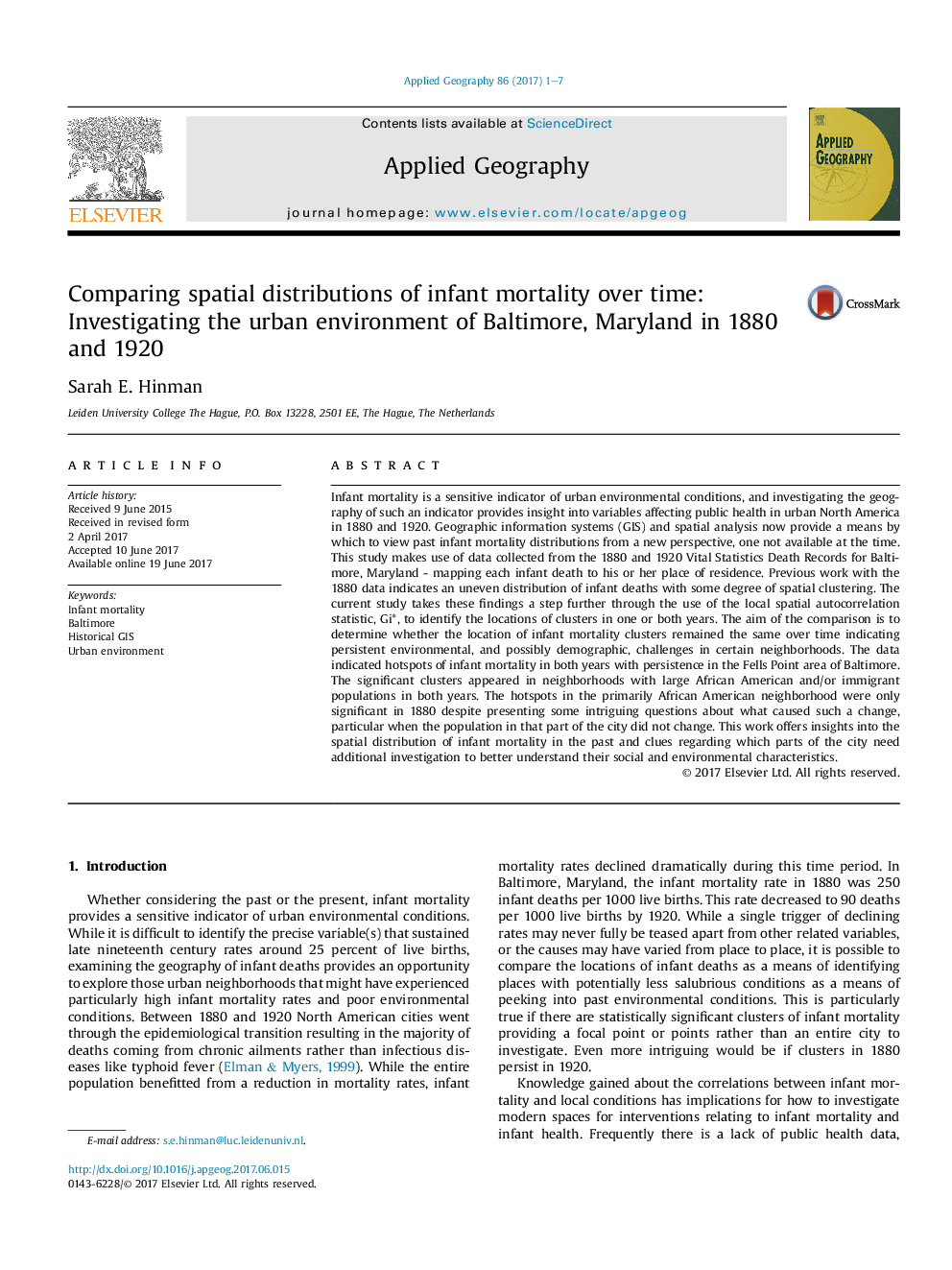| کد مقاله | کد نشریه | سال انتشار | مقاله انگلیسی | نسخه تمام متن |
|---|---|---|---|---|
| 6458313 | 1421031 | 2017 | 7 صفحه PDF | دانلود رایگان |
- Provides a unique insight into local spatial autocorrelation at the city block scale.
- Enhances the visualization of statistically significant hotspots of historical intra-urban infant mortality.
- Enables us to better understand the public health and historical environmental landscapes.
Infant mortality is a sensitive indicator of urban environmental conditions, and investigating the geography of such an indicator provides insight into variables affecting public health in urban North America in 1880 and 1920. Geographic information systems (GIS) and spatial analysis now provide a means by which to view past infant mortality distributions from a new perspective, one not available at the time. This study makes use of data collected from the 1880 and 1920 Vital Statistics Death Records for Baltimore, Maryland - mapping each infant death to his or her place of residence. Previous work with the 1880 data indicates an uneven distribution of infant deaths with some degree of spatial clustering. The current study takes these findings a step further through the use of the local spatial autocorrelation statistic, Gi*, to identify the locations of clusters in one or both years. The aim of the comparison is to determine whether the location of infant mortality clusters remained the same over time indicating persistent environmental, and possibly demographic, challenges in certain neighborhoods. The data indicated hotspots of infant mortality in both years with persistence in the Fells Point area of Baltimore. The significant clusters appeared in neighborhoods with large African American and/or immigrant populations in both years. The hotspots in the primarily African American neighborhood were only significant in 1880 despite presenting some intriguing questions about what caused such a change, particular when the population in that part of the city did not change. This work offers insights into the spatial distribution of infant mortality in the past and clues regarding which parts of the city need additional investigation to better understand their social and environmental characteristics.
Journal: Applied Geography - Volume 86, September 2017, Pages 1-7
